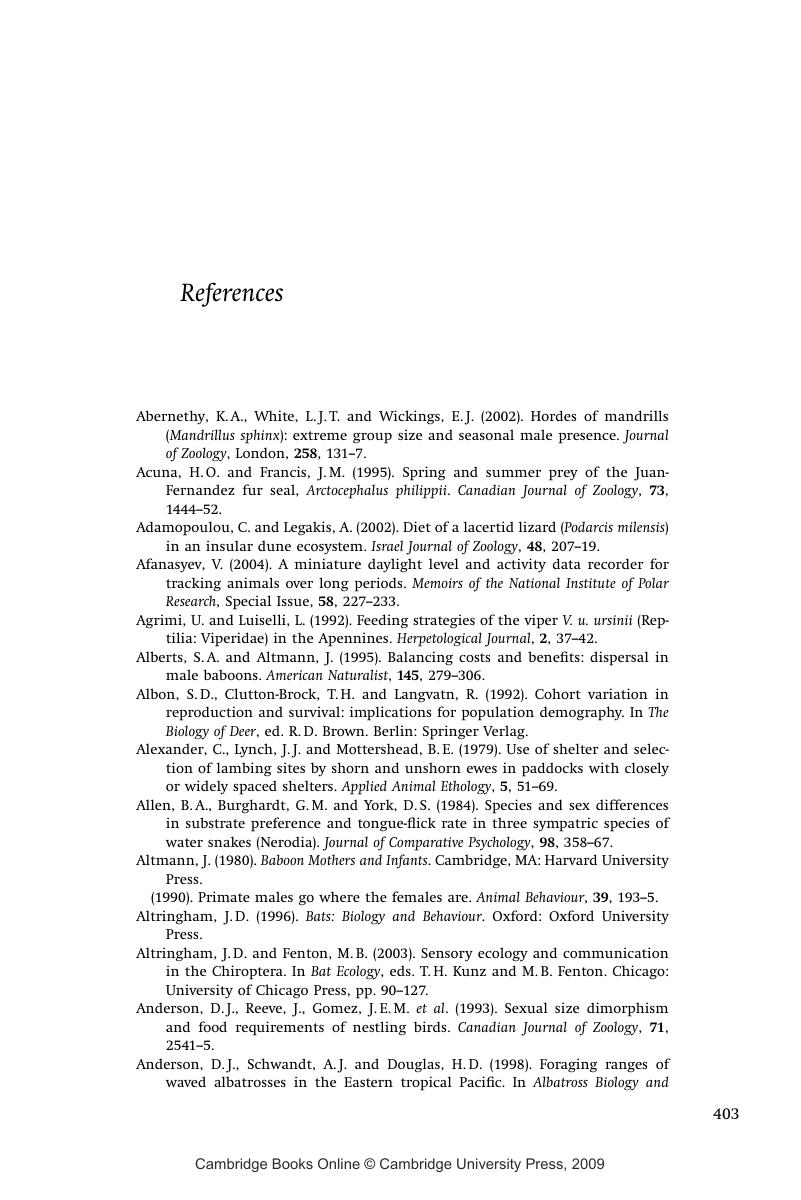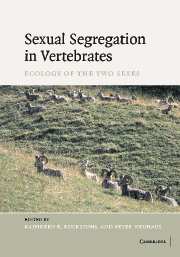Book contents
- Frontmatter
- Contents
- List of contributors
- Preface
- Part I Overview
- Part II Concepts and methodology
- Part III Foraging ecology
- Part IV Predator avoidance and reproductive strategies
- Part V Sex-related activities and social factors
- Part VI Sexual differences in ecology: comparisons within different taxa
- Part VII Implications for conservation
- Part VIII Outlook
- References
- Index
- References
References
Published online by Cambridge University Press: 04 September 2009
- Frontmatter
- Contents
- List of contributors
- Preface
- Part I Overview
- Part II Concepts and methodology
- Part III Foraging ecology
- Part IV Predator avoidance and reproductive strategies
- Part V Sex-related activities and social factors
- Part VI Sexual differences in ecology: comparisons within different taxa
- Part VII Implications for conservation
- Part VIII Outlook
- References
- Index
- References
Summary

- Type
- Chapter
- Information
- Sexual Segregation in Vertebrates , pp. 403 - 478Publisher: Cambridge University PressPrint publication year: 2006



